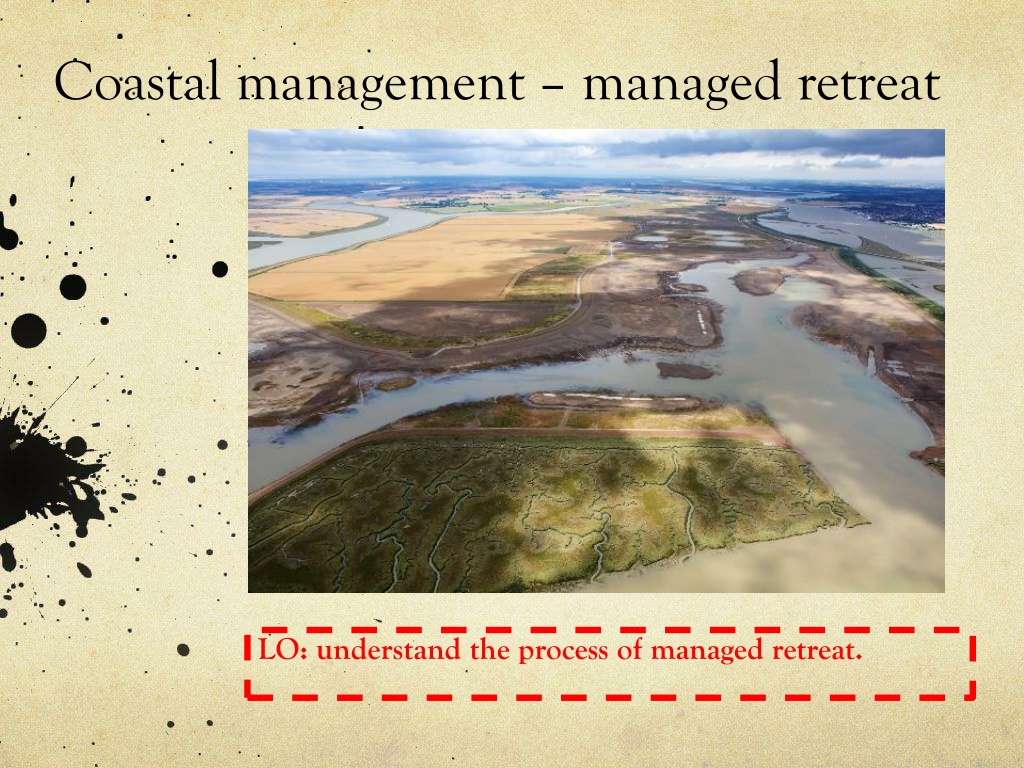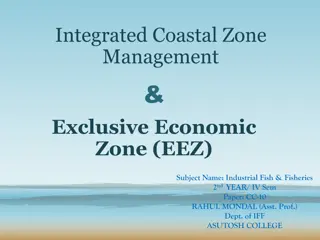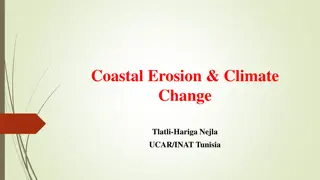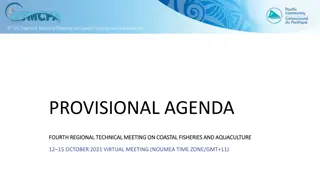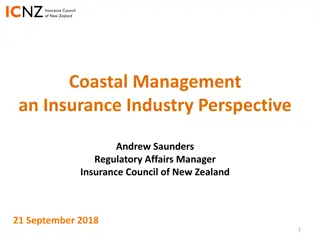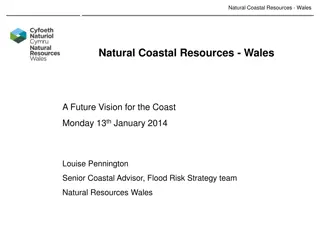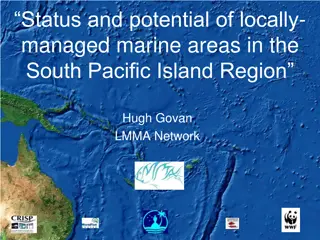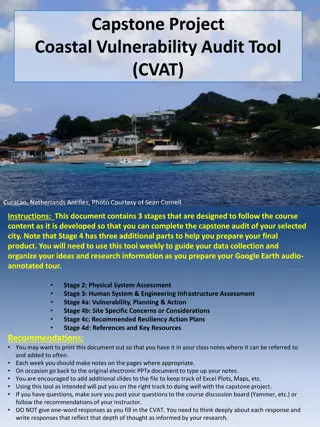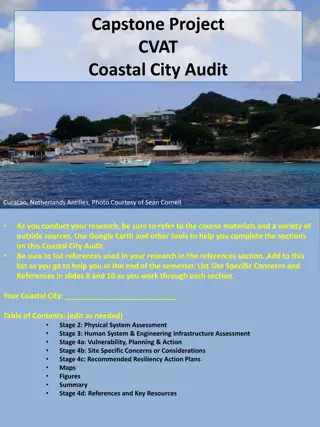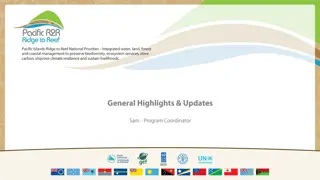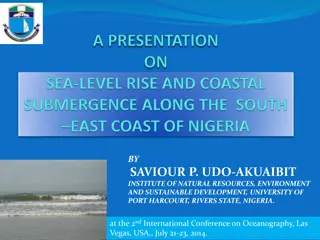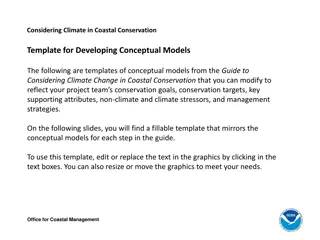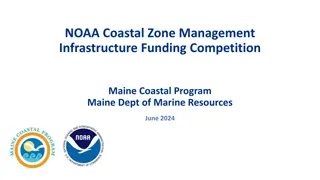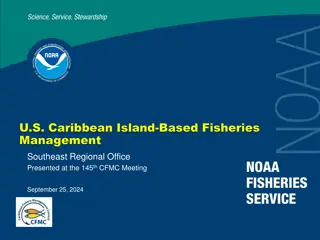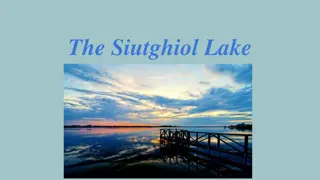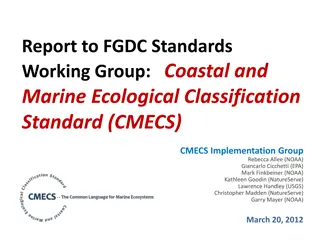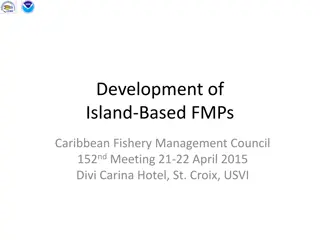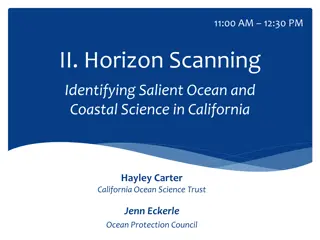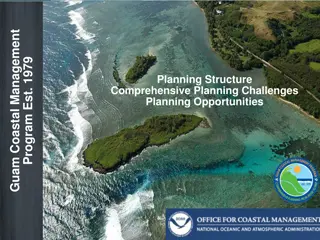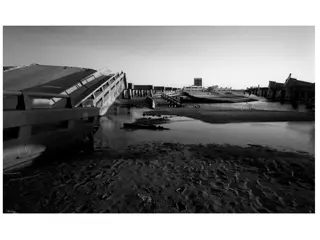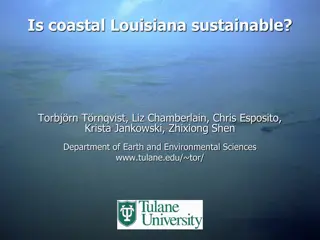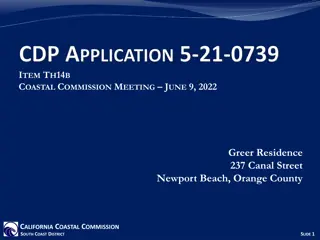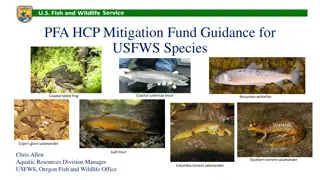Understanding Managed Retreat in Coastal Management: Wallasea Island Case Study
Wallasea Island in Essex, England employed managed retreat as a coastal management strategy, removing the sea wall to allow natural coastal processes. This decision, despite impacting local agriculture, led to the creation of salt marshes, serving as a cost-effective and environmentally beneficial solution to coastal protection.
Uploaded on Oct 09, 2024 | 0 Views
Download Presentation

Please find below an Image/Link to download the presentation.
The content on the website is provided AS IS for your information and personal use only. It may not be sold, licensed, or shared on other websites without obtaining consent from the author. Download presentation by click this link. If you encounter any issues during the download, it is possible that the publisher has removed the file from their server.
E N D
Presentation Transcript
Coastal management managed retreat LO: understand the process of managed retreat.
Wallasea Island Case Study Location The island of Wallasea is situated on the south east coast of England, in the county of Essex, between the Crouch and Roach estuaries. It was protected beforehand by a sea wall, however this would need to be replaced due to damage.
Background Information The area used to be a salt marsh as it was prone to flooding and was near the two estuaries so it was likely to flood due to those as well. The land that was protected behind the sea wall; consisted mainly of farm land, used for crop development and for keeping cattle.
What did they do at Wallasea? As the land behind was not worth very much property wise, though it could have drastically affected employment and occupations for those involved in the agricultural industries, the council employed a method of coastal management which was managed retreat. They therefore had to remove the old sea wall and then decided that they would not build a new one in its place.
What is managed retreat? Managed retreat is the process by which the sea is left to take its natural course without any human intervention to stop this from occurring. All defences against coastal erosion have to be removed and all the land situated near to the coast has to be accounted for, with the likelihood that it will eventually be flooded and possibly become a salt marsh.
Why was Managed retreat seen as a good option? - The land behind the sea wall was not worth too much to compensate for and it would cost more to keep protecting the coastal areas. - It created 115 acres of salt marshes that would benefit the environment and wildlife in the area immensely - It meant that they saved money that would have otherwise been uselessly spent on replacing the current sea defences ie. a new sea wall that would have cost around 1,000,000 per kilometre. However this method meant that the minimal amount was spent to protect the coast without overtly destroying the habitats. - The salt marshes that were created would act as a natural barrier to future flooding and also to more coastal erosion as any destructive waves that enter the area, have to go through the salt marsh before reaching the actual coasts and the cliff faces.
What were the effects of pursuing the course of managed retreat? -The farmers and agriculturalists in the area, would have lost land, money from their harvests and cattle, as well as possibly their employment. -Any existing wildlife that was there, could have been killed or its habitat would have been destroyed by the coastal erosion. -If any buildings were in the area at all, they could have been destroyed. -It could have potentially put any buildings in the land further from the coast, in a dangerous situation as there are no barriers, other than the salt marshes, to protect these buildings if the rate of coastal erosion continues as it currently is.
